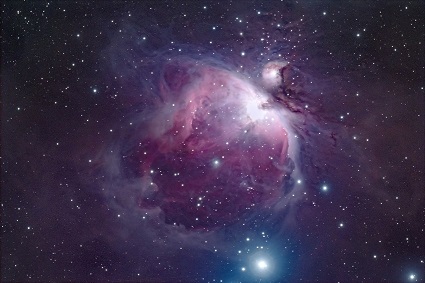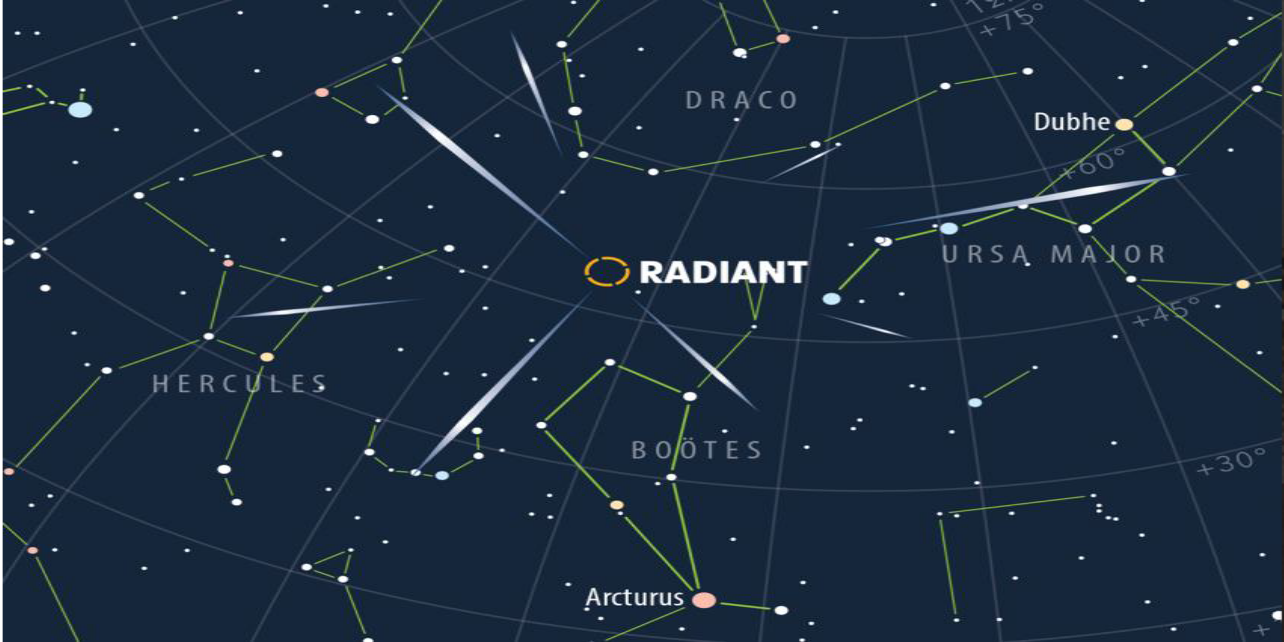What's Up? January 2024
Let's start 2024 as we mean to go on- looking up! Astronomer and Science Communicator Rosie Braunholtz gives us an overview of what we can see in the night skies this January.
Happy New Year!
I hope your celebrations were delightful and you’re excited to get back into stargazing after some festivities. Here is what’s up in the sky in January.
Orion takes center stage once again this January, rising in the east as night falls. By 20:00 it stands well clear of the horizon in the south-east. Orion's Belt, marked by three stars in a row, points downward to Sirius in Canis Major, the brightest nighttime star.
Betelgeuse, one of the most luminous stars in the sky makes up the eastern shoulder of Orion. The names is derived from rom the Arabic term bat al-jawzāʾ, which means “the giant’s shoulder.” Orion’s brightest star, the blue supergiant Rigel, sits on the bottom right of the constellation.
A highlight for amateur astronomers is the Orion Nebula, visible to the naked eye and captivating through binoculars or a telescope. This stellar nursery, located in the sword of Orion beneath the belt, consists of glowing gas and dust, providing a glimpse into a region of massive star formation 1,350 light years away.

Image Credit: Natasha Lund, Kielder Observatory
We have a few planets still in sight this month: Venus, Jupiter and Saturn.
Jupiter outshines every star with a magnitude of -2.5 on average this month. You’ll see it from when the sun sets around 17:00 against the stars of Aries to the south and will set at 1:00 in the west. If you have a telescope, it will show it’s four main moons and orange bands.
Saturn is still visible but for a shorter period. It’s dimmer than Jupiter with a magnitude of 0.96 so it will appear at around 17:30 and will only be visible for a few hours until it sets in the southwest at around 20:00.
Venus is the brightest planet at magnitude -3.9 but only the early birds will be able to catch it. Rising at 6am and setting only an hour or two later depending on when in January. It will also be easy to miss unless you have a clear view low into the south-west.
If you want to catch Mercury, you must be a real fiend (and also be lucky). Aim for the start of the month, round about the 5th-13th when the planet is at it’s turning point from being in apparent retrograde to normal motion. You will be wanting to look southeast between the hours of 7:00 and 8:00, just when the Sun is rising. It’s a short window! It’ll be a dimmer looking star to the left of Venus.
Moon enthusiasts can catch a stunning sight on the 18th of January when Jupiter aligns with the moon.
Lastly, The Quadrantid meteor shower will peak on 3-4 January 2024. The total period of this shower is from 28 December 2023 – 12 January 2024. Unlike other meteor showers that tend to stay at their peak for about two days, the peak period of the Quadrantids is only a few hours long. In dark skies you may see up to 100 meteors per hour. Luckily for us the moon doesn’t rise until midnight on the 3rd, giving us plenty of time (weather permitting) to see some meteors. The shower gets its name from the former constellation Quadrans Muralis which is now part of the constellation Boötes.

Image Credit: Image: Greg Smye-Rumsby, Astronomy Now (https://astronomynow.com/wp-content/uploads/2015/01/Quadrantids2artworkv2_940x796.jpg)
















